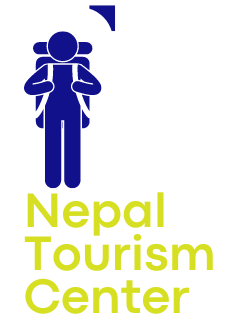Nepal, a country nestled in the lap of the Himalayas, is globally renowned for its breathtaking natural beauty, rich cultural heritage, and historic UNESCO World Heritage Sites. From the ancient temples of Kathmandu Valley to the serene landscapes of Lumbini—the birthplace of Lord Buddha—these attractions draw millions of visitors every year. However, one topic that often sparks debate is the differential ticket pricing at these sites, especially for foreigners. Why does Nepal charge varying ticket rates for international visitors, South Asian Association for Regional Cooperation (SAARC) nationals, Indians, and Nepali citizens? Let’s explore the reasoning behind this practice and its broader implications.
The Economic Context
Nepal’s economy relies heavily on tourism, which contributes significantly to its GDP. Infrastructural development, conservation, and maintenance of UNESCO World Heritage Sites require substantial funding. Charging foreigners a higher fee helps generate the necessary revenue to preserve these sites while keeping the costs affordable for local and regional visitors. This system ensures a steady flow of funds essential for sustaining Nepal’s heritage.
For instance, a portion of the ticket fees is used to restore damaged monuments, maintain cleanliness, and fund security measures to ensure the safety of these historic locations. These efforts are vital in a country where natural disasters like earthquakes frequently threaten the structural integrity of ancient sites. Tourists from wealthier nations generally have a higher disposable income, and their contributions help subsidize costs for others, creating a sustainable financial model for heritage conservation.
Moreover, the revenue generated from higher ticket prices supports local employment in roles such as conservationists and support staff at these sites. Thus, differential pricing not only sustains the sites but also uplifts local communities.
Differential Pricing: An International Norm
Differential pricing based on nationality is not unique to Nepal. Many countries implement similar systems at their heritage sites. The logic behind this model is twofold:
- Economic Disparity: Wealthier tourists can afford to pay more, which helps balance the financial burden on locals.
- Cultural Access: Reduced rates for domestic visitors ensure that local populations have the opportunity to engage with and appreciate their own heritage.
For SAARC and Indian nationals, the reduced pricing reflects Nepal’s commitment to regional cooperation and cultural exchange. SAARC member countries, including India, share deep historical, cultural, and geographical ties with Nepal. Offering concessional rates strengthens these bonds and encourages cross-border tourism within the region. It also fosters mutual understanding and collaboration, which are essential in a globally interconnected world.
Additionally, many international visitors recognize and accept this pricing structure as a way to contribute to the preservation of Nepal’s unique culture. Explaining the purpose of the differential pricing system—through on-site signs or brochures—can further enhance visitor understanding and participation in conservation efforts.
Special Relationship with India
Nepal and India share an open border and a unique relationship rooted in history, culture, and religion. Citizens of both countries enjoy visa-free travel and equal access to certain public facilities. The lower ticket prices for Indian nationals further reflect this special connection, recognizing the shared heritage and mutual respect between the two nations.
For example, many heritage sites in Nepal hold religious significance for Indian visitors, such as Pashupatinath Temple and Janakpur, the mythical birthplace of Sita. By offering discounted rates, Nepal encourages Indian pilgrims to visit these sacred landmarks, fostering deeper cultural ties and spiritual connections.
Benefits of Differential Pricing
- Sustainability: Higher fees from foreign tourists ensure that the conservation efforts for Nepal’s heritage sites are adequately funded without imposing undue financial pressure on locals. This model allows for long-term preservation of Nepal’s cultural landmarks.
- Increased Accessibility: Affordable pricing for Nepali citizens ensures that economic barriers do not prevent locals from visiting and appreciating their own cultural landmarks. This inclusivity strengthens national pride and awareness of Nepal’s heritage.
- Regional Collaboration: Discounted rates for SAARC nationals foster greater regional unity and tourism. They encourage cultural exchange and help promote Nepal as a destination within the South Asian region, which benefits both the host and visiting countries economically and culturally.
Addressing Concerns
Some critics argue that differential pricing may feel discriminatory to international visitors. However, it’s essential to communicate the rationale transparently. Despite the importance of this system, there has been limited effort from the government to address the concerns and queries raised by tourists regarding the pricing disparity. Many visitors question why the charges differ, yet there are few clear or accessible explanations provided on-site or through official channels. Informing tourists about how their contributions support preservation efforts can create a sense of participation and pride in safeguarding Nepal’s cultural treasures. For example, displaying signage or providing informational leaflets explaining how ticket fees are utilized can help dispel misunderstandings. For example, displaying signage or providing informational leaflets explaining how ticket fees are utilized can help dispel misunderstandings.
Efforts to improve visitor experience, such as well-maintained facilities, guided tours, and interactive exhibits, also help justify the pricing. When tourists see tangible benefits of their contributions, they are more likely to appreciate and support the system.
Conclusion
The pricing structure at UNESCO Heritage Sites in Nepal is a thoughtful strategy balancing economic needs, cultural access, and regional solidarity. While foreigners pay more, their contributions play a vital role in preserving Nepal’s rich heritage for future generations. For SAARC nations, including India, discounted rates symbolize the cultural and historical bonds that unite the region. This system also ensures that local communities benefit directly from tourism revenue.
Ultimately, differential pricing is not just about funding; it’s about inclusivity, sustainability, and fostering a deeper connection to Nepal’s heritage. By understanding and embracing this system, visitors contribute to preserving the timeless beauty of Nepal’s cultural landmarks, ensuring their legacy endures for generations to come.

Leave a Reply